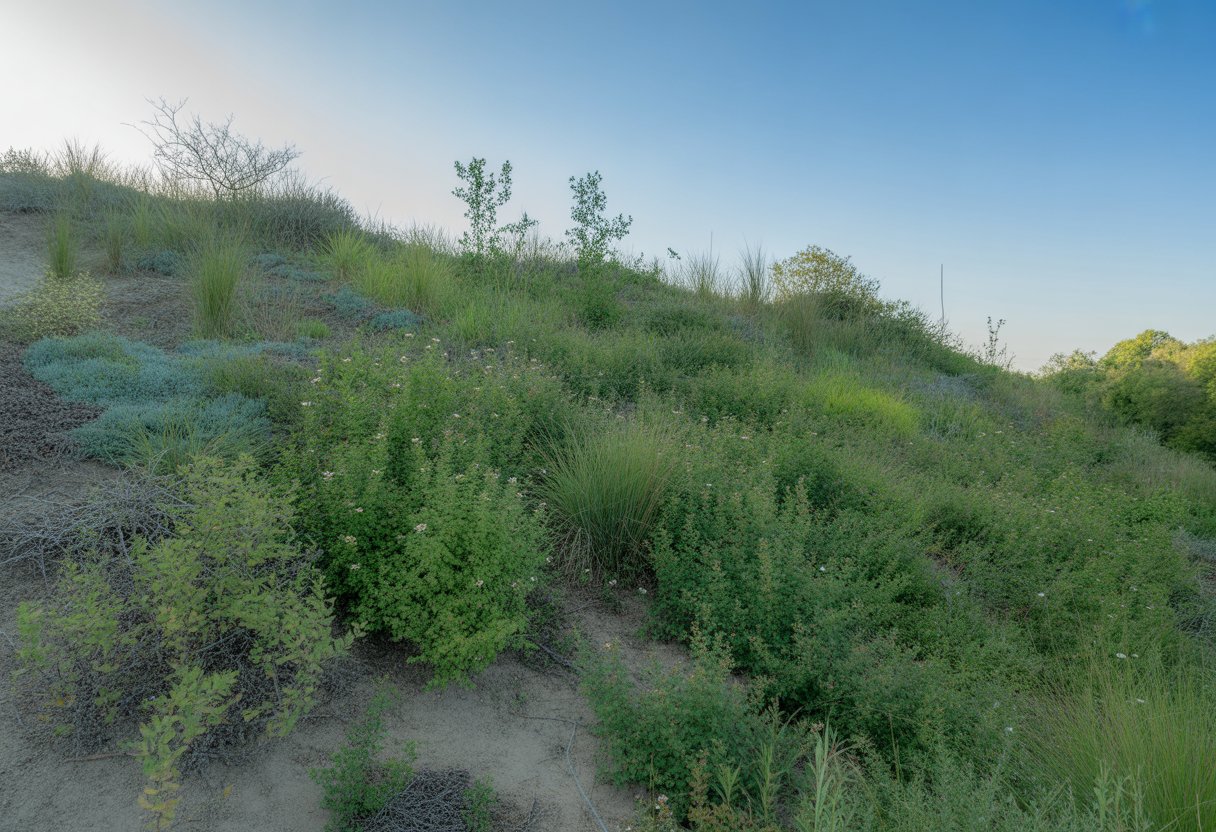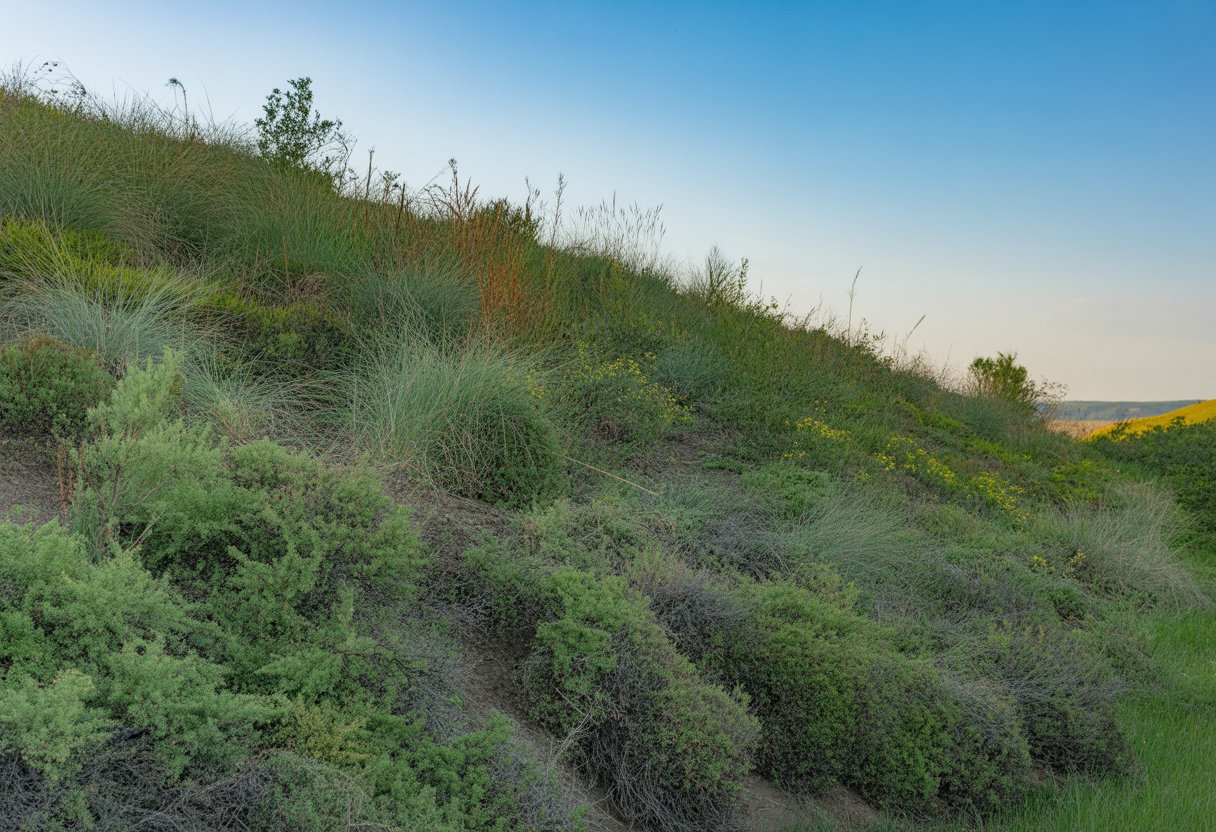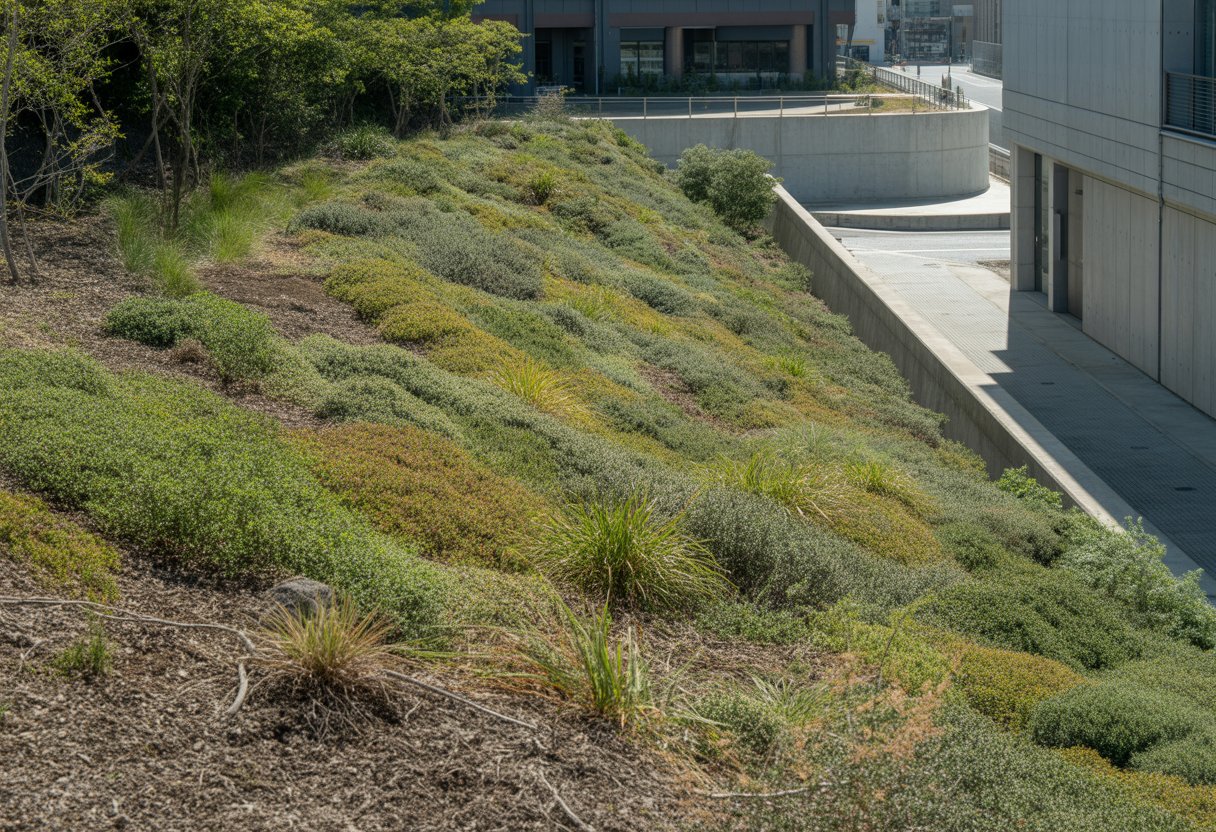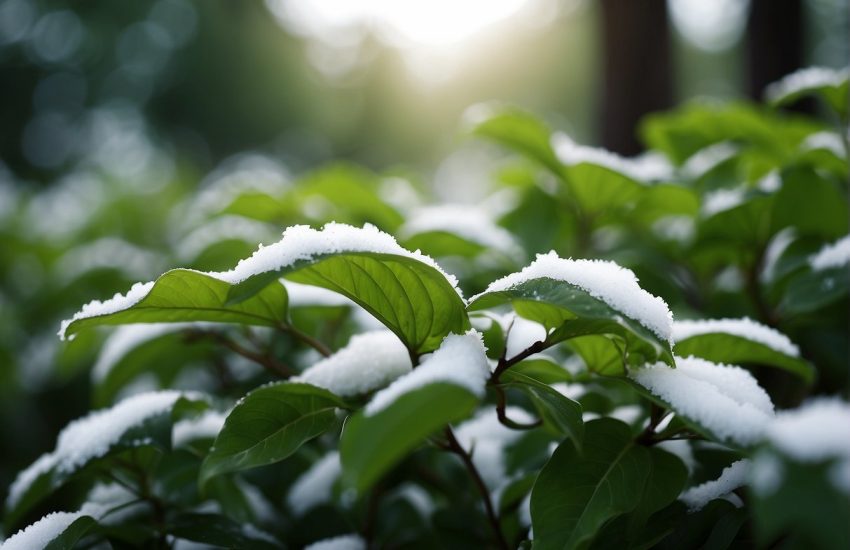Slope Erosion Control with Natives: Effective Strategies for Sustainable Landscaping
Slope erosion control matters for keeping soil stable and stopping land from washing away. Using native plants works well because their roots are already tuned in to the local environment, gripping the soil more effectively than most non-natives.
Native plants stabilize slopes by reducing runoff, increasing soil absorption, and minimizing erosion risks over time.

Slopes take a beating from gravity and water flow, which can strip away topsoil fast. Adding native vegetation slows water down and builds a living barrier, cutting back on erosion’s impact.
Their toughness and easy care make them a smart pick for sustainable slope management.
Understanding Slope Erosion and Native Plant Solutions
Slope erosion happens from a mix of natural forces and human activity. Risks like landslides go up, especially on steep slopes or riverbanks after heavy rain or wild weather swings.
Causes and Risks of Slope Erosion
Water runoff from big storms or long wet spells strips away topsoil, which weakens the slope. Losing soil like this makes landslides and sediment buildup in streams more likely.
Steep, loose slopes are especially at risk after big events like the 2022 floods. When there’s not much vegetation or when construction disturbs the area, erosion ramps up.
Riverbanks get hit too, as flowing water eats away at the soil and leaves the area less protected. If you don’t keep this in check, it can threaten both infrastructure and local wildlife.
Why Native Species Are Effective for Erosion Control
Native plants fit right in with local soil and weather, so they’re great for slope stabilization. Their roots dig deep and hold tight, keeping soil in place even when the rain just won’t quit.
They handle all sorts of conditions, from dry spells to soggy weeks, which is handy when the climate keeps changing. This hardiness helps them stick around and keep slopes covered.
Native species also boost biodiversity, giving local wildlife a hand and crowding out invasive plants that don’t do much for erosion. Their natural growth patterns really click with what steep slopes and riverbanks need.
Soil Types, Climate, and Site-Specific Challenges
Soil texture matters—a lot. Sandy soils drain quickly but can blow or wash away, so they need plants with thick root mats. Clay soils hold water but can crack, which leaves slopes exposed after heavy rain.
The local climate shapes what will actually survive. If you’re in a place that’s always wet or swings from drought to flood, you need species that can roll with both extremes.
Slope angle, past disturbances, and nearby water all play a role too. You’ve got to match the right native plant to the right spot, or you’ll be fighting an uphill battle for long-term erosion control.
Selecting and Establishing Native Plants for Slope Stabilization
Getting slopes stable means picking the right plants and setting them up to succeed. Choose native trees and shrubs that fit the site, blend in ground covers and seed mixes, and use planting techniques that work for your landscape—urban or not.
Choosing the Right Native Trees and Shrubs
Trees like Sydney red gum, Angophora, and Narrow-leaf scribbly gum put down strong roots that anchor soil. Shrubs such as Blueberry ash and Crimson bottlebrush lock in the mid-layer and add some wildlife value.
You want species that can handle the exact soil and sun your slope gets—even rocky spots. Trees and shrubs need to take full sun if the slope’s exposed, and their roots have to run deep and wide to keep landslides at bay.
Native picks help the local ecosystem while also doing the heavy lifting for stabilization.
Role of Ground Cover and Seed Mixes
Ground covers shield the soil from pounding rain and slow down runoff. Seed mixes often blend native grasses with quick-growers like annual rye and oats to get things started.
Nurse crops like rye and oats pop up fast, holding the soil while natives get established. Over time, the natives take over, and the quick growers fade out.
Make sure your seed mix fits the local climate and the steepness of your slope. Pick species that will thrive and add organic matter to keep the soil healthy.
Considerations for Planting Techniques and Site Preparation
Start by clearing weeds, testing the soil, and amending where needed so your plants have a fighting chance. Try terracing or planting along contours to chop the slope into easier-to-manage pieces.
Pay attention to root ball size and soil moisture to avoid transplant shock. Mulch around new plants to keep moisture in and weeds out.
If you’re dealing with rocky or packed soils, break things up before planting so roots can spread.
Planting and Establishment in Urban Backyards and Infrastructure Projects
Urban backyards need plants that stabilize slopes but don’t eat up all the space or look out of place. Homeowners can use native shrubs and ground covers that fit the area and don’t crowd patios or paths.
Near infrastructure, safety and regulations should guide what you plant. State infrastructure projects often go big with native plantings along roads and drainage.
Species like Sydney red gum or Crimson bottlebrush keep maintenance low and boost habitat value. Working with engineers helps make sure roots and branches won’t mess with structures.
Maintenance, Ecosystem Benefits, and Long-Term Success

Keeping slopes in good shape with natives really comes down to solid root systems, simple upkeep, and helping out local ecosystems. Good care keeps costs down and supports wildlife, which helps slopes stay green and strong over time.
Root Systems and Slope Stability Over Time
Native plants grow deep, tangled roots that pull soil layers together. These roots boost slope stability by making the soil stickier and letting water soak in, so there’s less runoff.
As plants mature, their roots adjust to changing moisture and soil, which helps slopes stay steady for the long haul. Species like Arctostaphylos or native grasses (OSU Extension has some good ones) are champs at this.
Costs, Maintenance, and Community Involvement
Native plants usually cost less to maintain since they don’t need much fertilizer or extra water. Local councils and programs often push for native planting to keep project costs in check.
Getting community groups involved in checking and caring for these plantings really helps. Volunteers can weed, replace dead plants, and keep an eye on slope health, which cuts down on pro maintenance.
Enhancing Biodiversity and Ecosystem Services
Natives bring in birds like the regent bowerbird and loads of other wildlife. More plant cover means a higher green cover index, which is good for local climate and carbon storage.
This regreening creates better pollination, pest control, and healthier soil. Native plantings build tough habitats that support both wildlife and the natural cycles slopes need.
Integrating Native Plant Erosion Control with Built Environments

Combining native plants with built structures really gives you the best of both worlds. This hybrid approach boosts stability, manages water, and keeps things resilient—even in tricky spots like East Coast Australia.
Retaining Walls, Artificial Reinforcement, and Hybrid Approaches
Retaining walls act as the main shield against soil slipping away. When you add native plants, they cut down on runoff and erosion even more.
Stuff like geotextiles or soil nails can reinforce slopes alongside these walls. Mixing in deep-rooted natives tightens up the soil and slows water down.
Hybrid approaches use retaining walls that meet civil standards, paired with native plants that fit the local scene. This way, you don’t have to clear as many trees and can still restore the ecosystem.
Managing Water and Groundwater on Slopes
Water movement and groundwater make or break slope stability. You’ve got to plan for drainage so the soil doesn’t get soggy and weak.
Native plants that pull up lots of water help lower groundwater levels. Their roots also create channels that let soil breathe, cutting down on waterlogging.
Engineered drainage systems work with the plants to move surface water away from trouble spots. On Australia’s East Coast, this combo tackles the challenges of heavy rain and steep ground.
Responding to Extreme Weather and Landslide Events
Slopes in areas that get hit with storms or heavy rain face a higher risk of landslides. Native vegetation really helps by holding soil in place before and after wild weather.
Sometimes, people use artificial reinforcement for quick slope protection during extreme weather. This is common on cut slopes near roads or other infrastructure.
But honestly, it’s the return of native plants that matters for the long haul. These plants soak up water and keep the soil anchored better than anything else.
After a landslide, folks usually plant native species that fit the local ecosystem. It’s a way to bring back habitat and toughen up slopes for whatever comes next.


